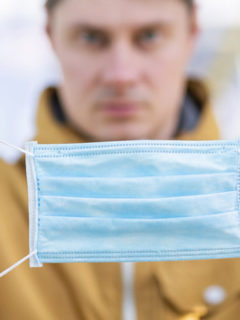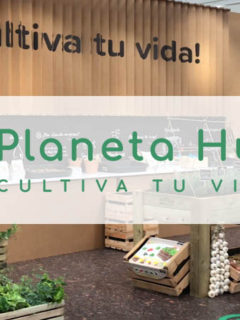are you thinking of exporting your products abroad? This can be a cumbersome process for companies, and knowing how and what to do to export a product safely is no easy task. Choosing the right export packaging is one of the most important factors in ensuring that your goods arrive in perfect condition at their destination country. Here are a few tips:
What is the right packaging for exporting safely?
To ensure optimal delivery of your shipment, you must have the right packaging with high security.First, check the quality of the material. Should you choose double or triple channel boxes? Ask the right questions
- to which country do I send the goods?
- what type of goods am I sending?
- what means of transport is used: road, rail, air, sea?
choose a strong cardboard, adapted to the climatic conditions of all the countries it passes through before reaching its final destination and capable of withstanding palletised shipment. Also, you must secure your products inside the boxes so that they move as little as possible during shipment. To do this, you can use 2 types of fillers: fillers that prevent movement and those that protect (bubble film, for example).
How to protect the goods from weather conditions and theft?
Your packages can be at risk during export for two different reasons: weather conditions or theft. To export the goods and protect them from bad weather, consider using
- A humidity absorberdesiccant bags are easy to use and very effective, they are placed inside the boxes and prevent the formation of water.
- A temperature indicator: Depending on whether the goods are going to hot or cold countries, a temperature indicator (rising or falling) secures shipments by warning if the shipment has been exposed to temperatures that are harmful to your products.
- Coloured stretch film: Protects the pallet from UV rays.
to secure the package and prevent theft, you can use
- Security tape: There are adhesive tapes that mark when a package has been attempted to be opened, this can also be achieved with adhesive tape personalised with your brand, as it is irreplaceable.
- Gummed band: This is made in such a way that any attempt to peel off the band causes the box to break and makes it obvious that it has been opened.
- Plastic seal with serrated strip: It has an individual marking that makes your goods unique.
| Light packages up to 25 kg | Packages up to 35 kg | Heavy packages from 35 kg and above or bulky packages | |
| which tape to choose? | Choose a 28 micron PVC or polypropylene tape, adhesive paper or gummed tape | Choose a 32 micron PVC or polypropylene tape or a gummed strip | Choose a PVC or polypropylene tape with a minimum of 40 microns, reinforced tape or reinforced gummed tape |
| how to use the tape? | Make a simple closure with 2 strips | Make a reinforced closure with 6 strips | Make the closure with 70 or 75 mm wide adhesive tape and a complete closure with 6 strips. |
| Example photo | 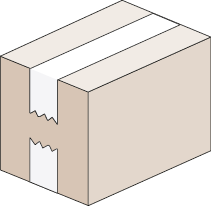
U-locking |
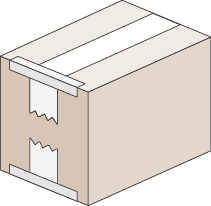
L+U-locking |
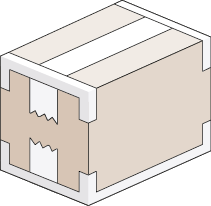
H-closure |
–
What is the best packaging for transporting pallets?
There are 2 casuistry
- Your company sends individual packages and does not build its own pallets: You must make sure that the transport company perfectly integrates your package on the pallet. To do this, choose palletisable boxes (of standardised dimensions) and check their quality to avoid crushing.
- Your company builds its own pallets for a bulk shipment: You must guarantee the safety and quality of the pallet as explained below:
1.
Choose the right pallet
Today, the most commonly used pallet type in Europe is the Europallet, con dimensiones estandarizadas de 800 mm de ancho por 1200 mm de longitud. El tamaño debe adaptarse con el modo de transporte: Terrestre, ferroviario, aéreo o marítimo.
El material del palet permite controlar los costos de envío por su eso. Los palets de fibra son más ligeros y , por lo tanto, más fáciles de manejar y con menor costo de envío. Están exentos del procesamiento para la exportación, a diferencia del palet de madera, que es más pesado y requiere un certificado de conformidad NIMF 15 para la exportación.
2. Elige entre una caja contenedor o paletizar
Las cajas contenedores tienen una enorme ventaja, pueden ser transportados por terrestre, ferroviario, aéreo o marítimo. Admiten hasta una tonelada de carga y cumplen con la norma internacional NIMF 15, que tiene como objetivo reducir la propagación de plagas de un continente a otro (con esta norma se elimina la necesidad de fumigación o tratamiento térmico en madera).
3. Construye tu palet
En caso de que desees cargar diferentes
for
- A cover to protect from bad weather and dirt.
- An opaque film to guarantee the confidentiality of the shipment.
- An anti-stacking cone to indicate that another pallet must not be stacked.
etiquetado de la carga
Al exportar, si etiquetas tu mercancía correctamente, en caso de daño y/o deterioro durante el transporte puede ser reembolsado por la compañía. Pero si no hay etiquetas o son incorrectas, puede ser la empresa emisora la responsable. Así que asegúrate de colocar en sus palets o paquetes, dependiendo de los productos, el etiquetaje adecuado. Y no te olvides de la tarjeta de identificación de tu paquete (nombre, cantidad, producto, etc.)
Infórmate sobre las regulaciones de la exportación de productos
Que tu mercancía se quede retenida en la aduana o rechazada por razones reglamentarias sería una lástima, así que debes saber como evitarlo. La Unión Europea, por ejemplo, tiene reglas de etiquetado específicas para ciertos productos como alimentos, alcohol, textil, etc.
También deben tenerse en cuenta las formalidades aduaneras (fuera de la UE): averigua sobre el país de exportación para evitar sorpresas desagradables o pregunta a tu transportista. Las empresas detranspor
- Choose your packaging wisely: double or triple channel cardboard, easy for the transporter to handle.
- Think about sending it by pallet or choose a suitable format. Don’t forget the palletising accessories, such as the anti-knocking cone, to guarantee the integrity of the pallet.
- Take care of the labelling of the packages or pallets and find out about the regulations in the destination countries.
if you want to find out more about whether your choice of export packaging is the right one for your products, ask our packaging specialists on 902 20 30 06, or visit the export packaging section of our website.
Image source: Thinkstock®













